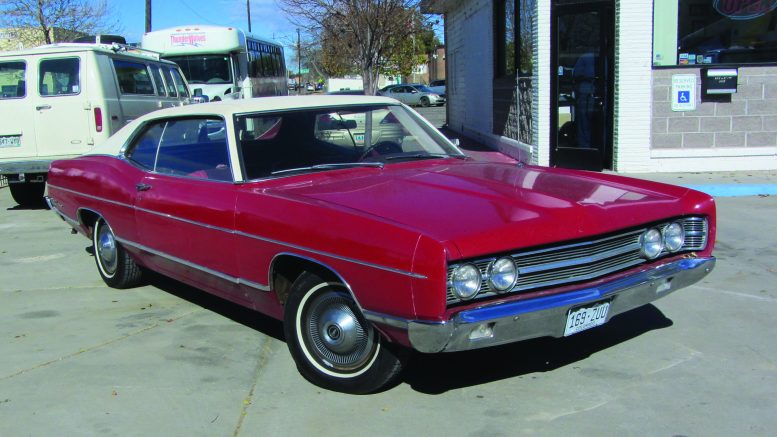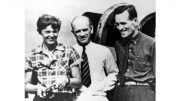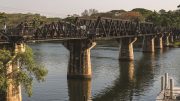I read the article “Callinex grows Flin Flon footprint” (T.N.M., March 22/17), and it reminded me of an anecdotal incident that happened back in the 1960s when my father Lew Parres and I discovered the Pinebay copper deposit in Manitoba. (Actually, there was no Pinebay yet!)
My dad had been in Sourdough Bay in Manitoba in 1929 with his father, Chris Parres, to examine the Baker Patton property. They had travelled by canoe from Saskatoon. There were some cabins and the showing was up on a high hill on the east side of Sourdough Bay. There was a large gossan reflecting a body of sulphides with low copper and gold values.
When we worked for Guggenheim Exploration out of New York City in the 1960s, administered by Oscar Strauss II, we were back and forth between Timmins and Flin Flon. We opened an exploration office in South Porcupine but Flin Flon was our main exploration base.
Hudson Bay Exploration and Development (HBED) had done saturation horizontal loop geophysics over the area, discovered the North Star and Don Jon deposits, mined them and moved on.
Of course, good prospective ground was hard to come by in the Flin Flon area, as Hudson Bay Mining and Smelting owned most of the best land and had the cash flow from producing mines to pay the taxes to hold the claims.
My dad remembered the abundant rhyolites in the Baker Patton Felsic Complex at Sourdough Bay and began assembling a land package by optioning claims from prospectors Al Jacobson and Jack Murray. We staked a bit of open ground as well.
In the assessment maps filed by HBED from the 1950s, I noticed an area out in the lake off the northeast tip of Sourdough Island where there was a perfect-looking sulphide anomaly — you could call it “textbook.”
The anomaly, however, showed all positive readings. Of course, with horizontal loop geophysical readings over a conductor (anomaly) you would expect negative readings.
For this reason HBED had never drilled the “positive” anomaly. I was sure it was a genuine anomaly. Either the console operator was green and recorded positives in his notebook instead of negatives or the draughtsman had plotted the readings wrong. Who knows?

The Pinebay polymetallic mine in Sourdough Bay in near Flin Flon, Manitoba, circa 1971. Credit: Jim Parres.
As it was summer and I needed to get back to Timmins, I had to act fast. We were working in Quebec at the time. I used several helpers and two boats to try to survey a line across the water over the location of the positive anomaly.
I didn’t know if the 300-foot reference cable being partly in the water would affect my reading ability on the console. This procedure wasn’t very accurate for stations, plus there was probably some short cable effect.
I did get negative readings and they showed some width. I was ecstatic, though my helpers thought I was a bit bonkers. I showed my dad the results and he got excited as well.
But the anomaly was too far out in the lake to drill from the land, so we would have to wait until after freeze-up.
After the lake froze we put a grid on the ice and did a complete hoop survey of the Sourdough Bay area. The resultant HLEM anomaly spanned 4 lines in strike length and was bonafide.
Once there was enough ice for a drill, my dad and geologist Art O’Donnell spotted the original discovery hole. We intersected 69 feet (19 metres) of 3% copper. No zinc.
My dad immediately moved the drill to another location 10 miles away, and we staked what other open ground was available.
Further drilling revealed a copper deposit of approximately 2 million tons of modest grade. The deposit came to surface at the bottom of the lake.
It’s hard to estimate how much of the original deposit was scraped away by erosion and glacial action, but I would guesstimate at least half. Later we intersected 16 metres of 5% zinc in the nearby Cabin zone, also under the waters of Sourdough Bay.
The two prospectors were up in age and asked for a buy out. My dad negotiated on their behalf, and was able to pay them $100,000 each. I had purchased a new 1969 Ford Galaxie for $2,700 in 1969, so their $100,000 would be more than a million dollars in today’s money.
During the development stage of the deposit we blasted a huge rock outcrop to provide road access to the shaft location. We used the blast rock to build a causeway over to Sourdough Island. This created Pinebay, parallel to Sourdough Bay. There was another small deposit several miles south under Little Athapap Lake discovered by Sherritt-Gordon Mines in the late 1940s and they called it Sourdough Bay. Our copper and zinc deposits aren’t even in Pinebay, but in Sourdough Bay. Are you confused yet?
— Jim Parres lives in Thunder Bay, Ontario.





Intresting read. Reach me.